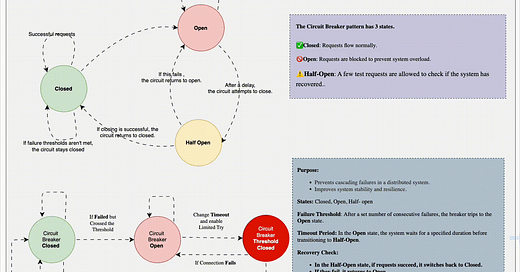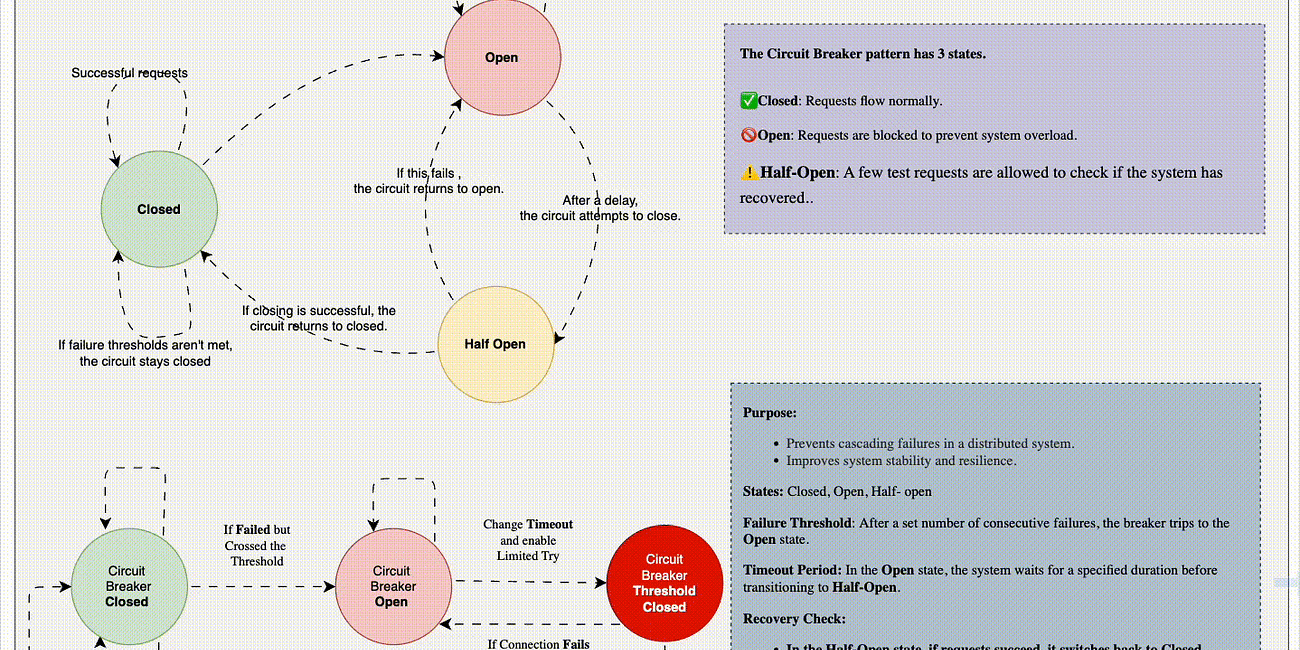System Design Refresher :
System design trade-offs involve balancing competing priorities and constraints when building a software system. Understanding trade-offs helps make informed decisions that align with the project’s goals, such as performance, scalability, maintainability, and cost.
Here are the key trade-offs to consider in system design:
1. Performance vs Scalability
Performance: Optimizing for low latency or high throughput for a single machine or a small system.
Scalability: Ensuring the system can handle increased load by adding more resources (horizontal scaling).
Trade-off: Optimizing for one may hurt the other. For example, caching improves performance but may limit scalability when invalidations get complex.
2. Consistency vs Availability (CAP Theorem)
Consistency: Every read receives the latest write.
Availability: Every request gets a non-error response, even if some nodes fail.
Partition Tolerance: The system continues to function even if communication between nodes is broken.
Trade-off: You can only choose two of these properties (CAP). For example:
Strong consistency (like in SQL) often sacrifices availability during a network partition.
Eventual consistency (like in NoSQL systems) improves availability but tolerates stale data.
3. Latency vs Throughput
Latency: The time it takes to process a single request.
Throughput: The number of requests the system can handle per second.
Trade-off: Optimizing for lower latency (e.g., processing requests immediately) may reduce throughput because fewer requests are batched. Conversely, batching improves throughput but increases latency.
4. Complexity vs Simplicity
Simplicity: Simple systems are easier to maintain and debug.
Complexity: Added features (like microservices) improve scalability and modularity but come with operational overhead.
Trade-off: Introducing complexity for long-term scalability may hinder short-term development speed.
5. Reliability vs Cost
Reliability: Ensuring fault tolerance and high availability.
Cost: Achieving reliability requires redundancy, backups, and monitoring, which increase costs.
Trade-off: High reliability can be expensive. For example, distributed systems with multiple replicas ensure reliability but cost more to deploy and maintain.
6. Monolith vs Microservices
Monolith: Easier to develop and test but harder to scale and maintain at a large scale.
Microservices: Highly scalable and modular but adds operational complexity (deployment, monitoring, inter-service communication).
Trade-off: Startups may prefer monoliths for speed, while enterprises lean towards microservices for scalability.
7. Stateful vs Stateless
Stateful: Easier to maintain session-specific data but harder to scale and recover after failure.
Stateless: Improves scalability and fault tolerance but often offloads state management to external systems (e.g., databases, caches).
Trade-off: Stateless designs work better for large-scale systems but require additional infrastructure.
8. Consistency vs Latency (PACELC Theorem)
Consistency: Guarantees up-to-date data.
Latency: Reducing response time to improve user experience.
Trade-off: In non-partitioned systems, you must choose between low latency or strong consistency. E.g., reducing latency may require tolerating eventual consistency.
9. Read-heavy vs Write-heavy Optimizations
Read-heavy: Optimize for faster reads using caching, denormalized data, or indexing.
Write-heavy: Optimize for writes with strategies like log-structured storage or batching.
Trade-off: Write-optimized systems (e.g., Cassandra) may suffer slower reads, while read-optimized systems (e.g., Elasticsearch) need careful write handling.
10. Development Speed vs Long-term Maintainability
Development Speed: Rapid prototyping and feature delivery may favor less robust designs.
Maintainability: Clean architecture and technical debt reduction slow initial delivery but pay off long term.
Trade-off: Startups may sacrifice maintainability for speed, whereas established companies focus on longevity.
How to Approach Trade-offs:
Define Requirements: Identify primary goals (e.g., scalability vs performance).
Prioritize: Understand constraints like time, budget, or infrastructure.
Evaluate Options: Consider system architecture patterns (monolith vs microservices, SQL vs NoSQL).
Test and Measure: Benchmark trade-offs to identify the best solution.
Iterate: Trade-offs evolve as requirements change—be ready to adapt.
Let me know if you need examples for a specific trade-off!
Latest Article about Circuit breakers
You can combine some of the techniques we've discussed so far. You can consider an interaction between Service A and Service B as analogous to an electrical circuit.
In electrical wiring, circuit breakers perform a protective role — preventing spikes in current from damaging a wider system.




